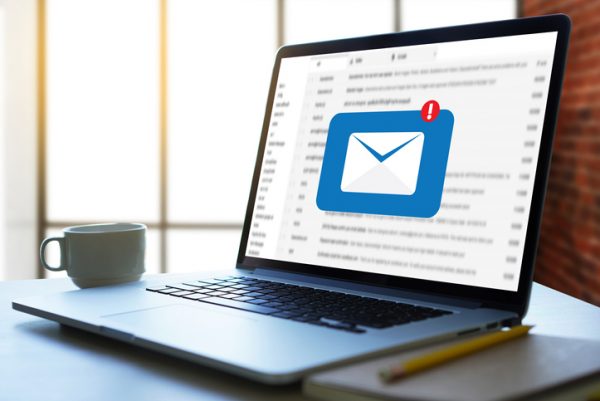If you want to understand why marketers are always banging on about email, you just have to check the stats.
- The ROI on email is higher than any other marketing channel. For every £1 spent on email marketing, the business generates on average £42 .
- More people buy from email marketing than they do from other platforms. Email marketing accounts for 174% more conversions than social media.
- The average order value from an email is high too, in fact it’s 17% higher than social media.
But there are other reasons we love email marketing.
For instance, you don’t own your social media profiles. So, if most of your website traffic comes from Facebook and they change the rules, you could lose traction overnight, and your business could suffer.
With email marketing on the other hand, as long as you send your contacts useful, interesting or entertaining emails, they will continue to open them. Any contacts who unsubscribe are not your target audience, so no need to worry if you lose the odd one here and there. Quality is far more important than quantity when it comes to email marketing.
Social media is still a very useful way of getting traffic to your website, but what happens to your website visitors after their initial visit? Use your website space to get them on your mailing list. If you offer visitors an irresistible freebie they’ll be happy to hand over their email address. Give them free actionable and exciting tips and information that they can really use.
Once they’re on your mailing list, it’s much easier to nurture your relationships with customers and prospects by email and deliver value so they learn to know, like, and trust you.
What is email marketing?
Most businesses use email marketing in 2 ways.
- Email sequences to launch or sell a specific product or service
This is usually a sequence of 5-8 emails delivered over a specific period of time. Customers usually subscribe to an email list in order to receive a discount, free shipping, or another special offer such as a free eBook or access to a webinar or video training. Alternatively, customers come to the email list from Facebook Ads.
Customers are then guided through a series of emails that are designed to deliver value, generate engagement, develop trust in the brand, and ultimately lead them to buy the product or service.
Email sequences are an extremely effective way for businesses to connect with their customers, show empathy for their challenges, and address any objections they might have about buying their product.
- Regular email newsletters
Most businesses have email lists, some generated in the ways mentioned above, others from lists of previous customers, or people who have made enquires. Sending a regular, weekly, bi-weekly, or monthly newsletter that delivers value to your customers and prospects is an effective way to develop the know, like, and trust factors. And people buy from companies they know, like and trust.
Regular email newsletters are effective because if you deliver value in your emails, people start to look forward to them and get used to opening them. So, when you’re ready to sell them something, they’ve already connected with you, feel that you understand them, know that you have the authority to deliver, and therefore, they are more likely to buy from you.
How do you make the most of email marketing?
In order to make the most of email marketing, it’s essential that you do these three things.
- Always deliver value
The most common mistake businesses make with email marketing is not delivering content that their customers want and find useful.
No one wants to receive unhelpful emails, so make sure you deliver value. And when you create a sequence to sell your customers something, show through your emails how it will help them.
Customers only get excited to open your emails if they think they’re going to get something useful, so be sure to include some exclusive content like a tip about delivering the service you offer, or using the product you sell.
It’s a good idea to send special offers to your email list every now and again too.
- Send emails consistently
Another common mistake is to only email your customers when you want to sell them something. If they don’t hear from you for months and then get an email sequence that’s selling a new service, you’re likely to get a lot of unsubscribes.
Decide on a schedule you can keep to and make sure you stick to it. Even if not every email you send gets opened, seeing your name in their inbox keeps you in their minds.
- Conform to the General Data Protection Regulations (GDPR)
If you collect email addresses, it’s important to ensure you conform to GDPR, or your business could be subject to a hefty fine.
- Make sure it’s clear when people submit their email address that they will receive emails from you.
- Every email should offer the option to unsubscribe and this should be carried out immediately when requested. Most email service providers include this as standard.
- You should also enable “double opt-in” on your email service provider which means when someone subscribes to a list, they will receive an automatic email they will need to confirm in order to join the list.
We really love email. So, if you need help creating emails your customers love, contact us for help.

